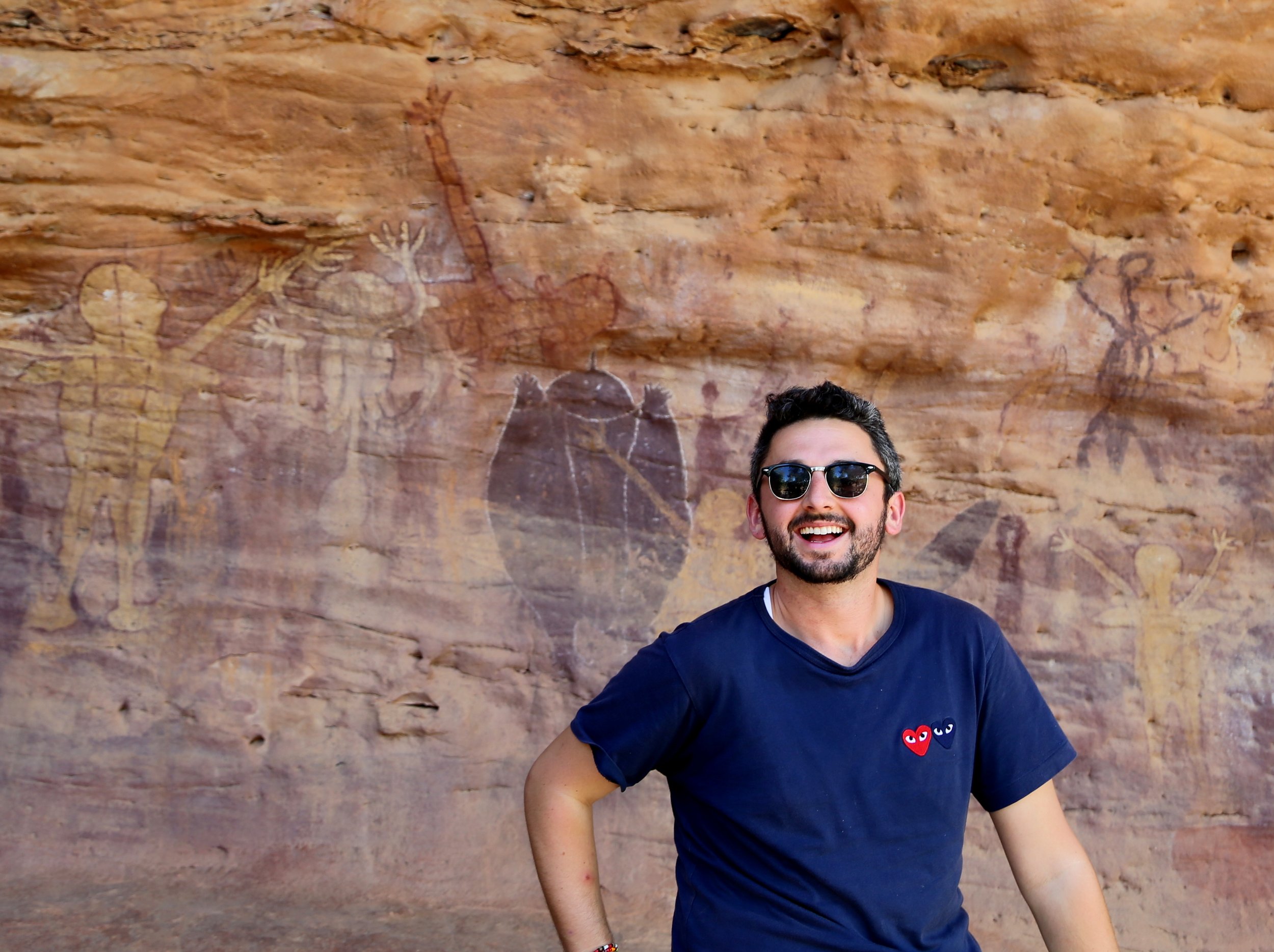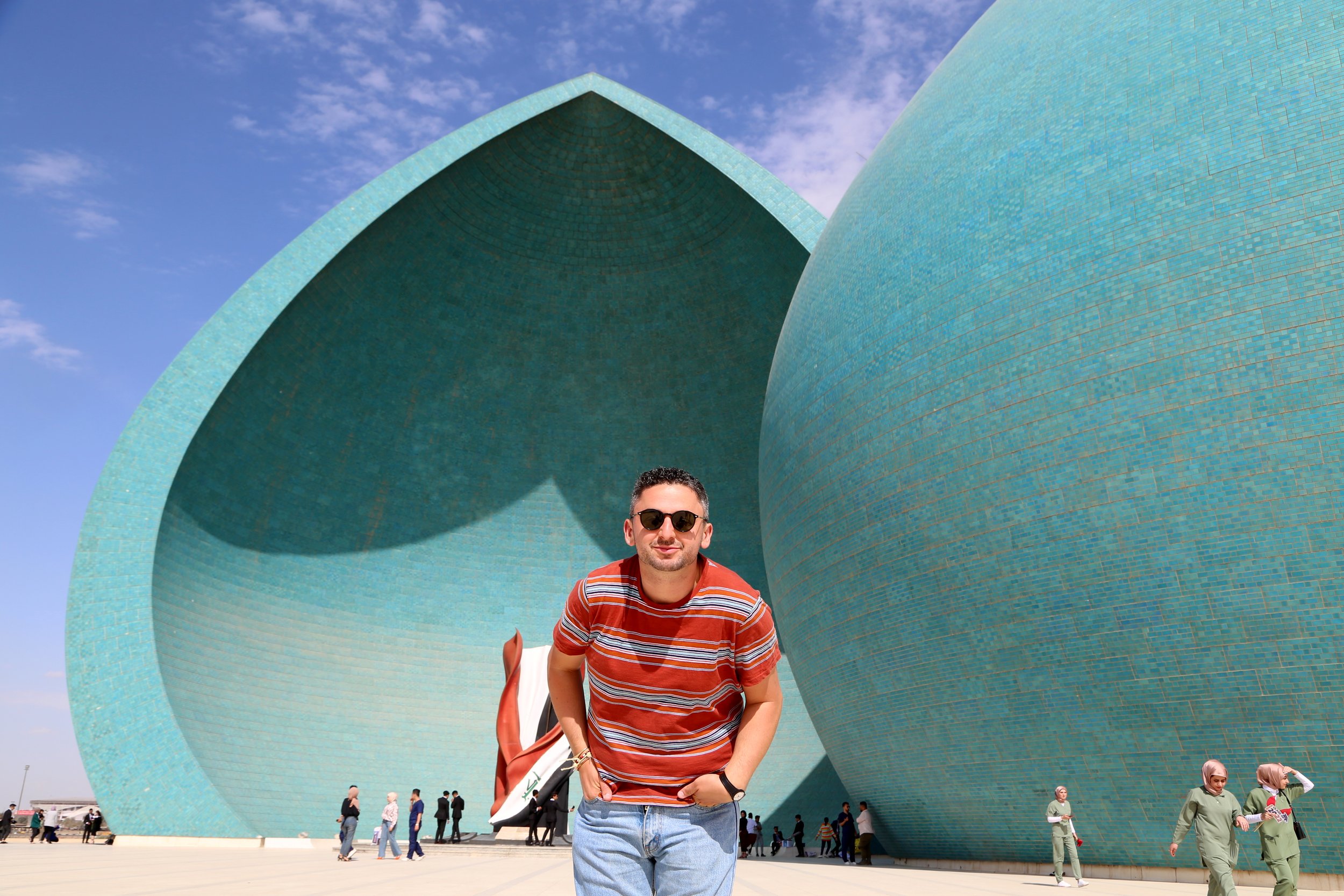What One Man Learned About Religion Visiting Every Country in the World
A synagogue in the Jewish shtetl of Sejny. Creative Commons photo by Emmanuel Dyan.
May it be Your will, Lord, our God and the God of our ancestors, that You lead us toward peace, guide our footsteps toward peace, and make us reach our desired destination for life, gladness, and peace. … May You send blessing in our handiwork, and grant us grace, kindness, and mercy in Your eyes and in the eyes of all who see us.
The Traveler’s Prayer — also known as the Wayfarer’s Prayer, or Tefilat Haderech in Hebrew — is an invocation said at the onset of a journey. Customary to recite when one embarks on a long trip, the prayer is a request for safety and protection but also that the traveler would be a blessing to those they meet in the course of their voyage.
Daniel Herszberg, a 30-year-old doctoral student from Australia, said the prayer is a common one among Jewish travelers, and the “beautiful text” traveled with him as he visited all 197 countries around the globe over the last 10 years.
Daniel Herszberg in Australia.
As he finished his feat after setting foot in Tonga in March 2023, Herszberg became the 145th most travelled person in the world. Along the way, he also amassed 79,000 Instagram followers at @dhersz. He also became an unofficial student of humanity, treasuring the opportunity to learn more about the world’s religions and connect with Jewish communities scattered across the globe.
From Addis Ababa to Tehran, Herszberg visited synagogues, schools, cemeteries and Sabbath services in hospitable homes. In Suriname and Poland, in Pakistan and Sudan, Barbados and Brazil, Herszberg not only discovered cherished archives and legacies but connected with locals who shared their stories — both lived and long forgotten. In some instances, he was the first person to have visited Jewish heritage sites in decades.
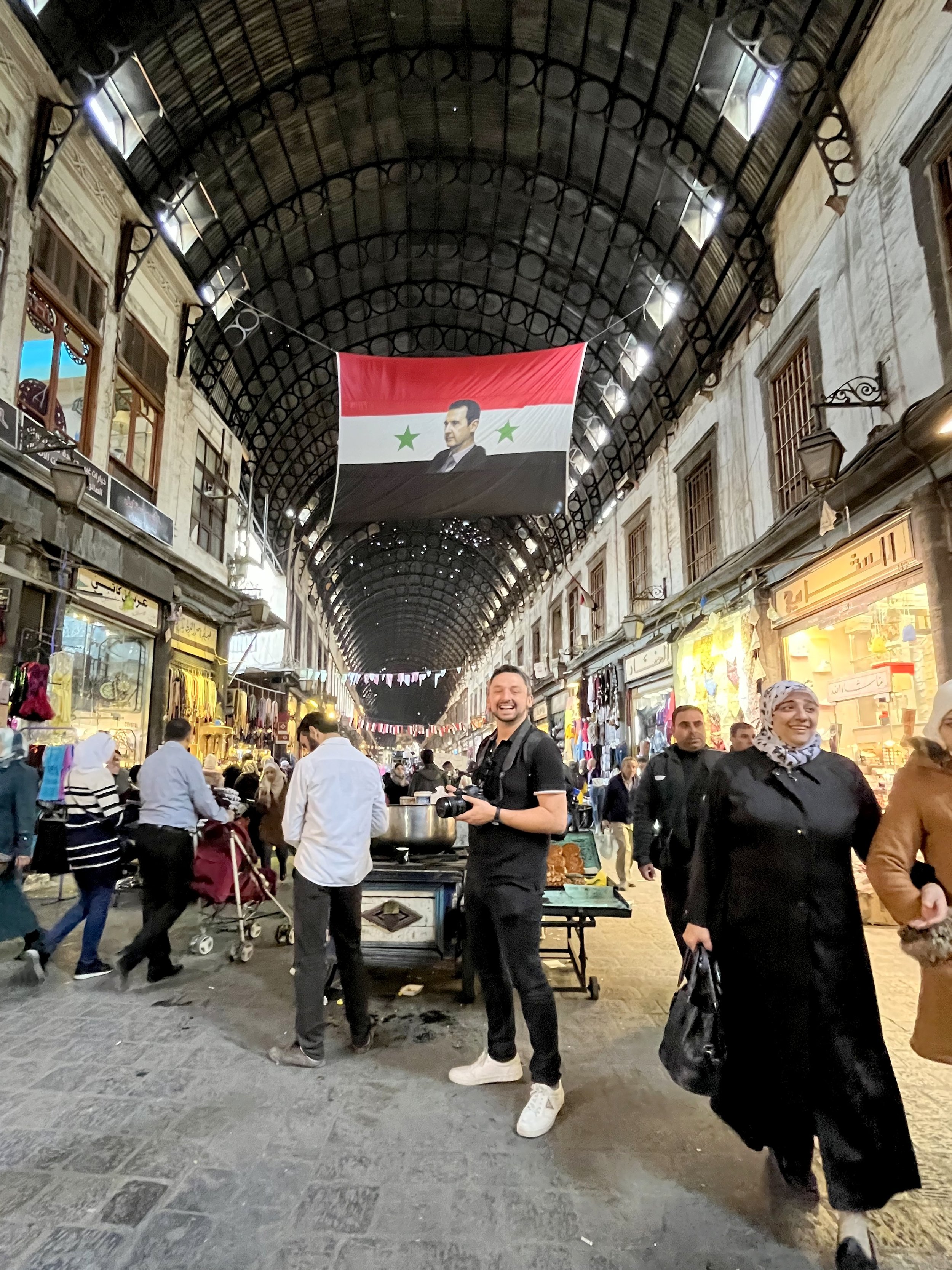
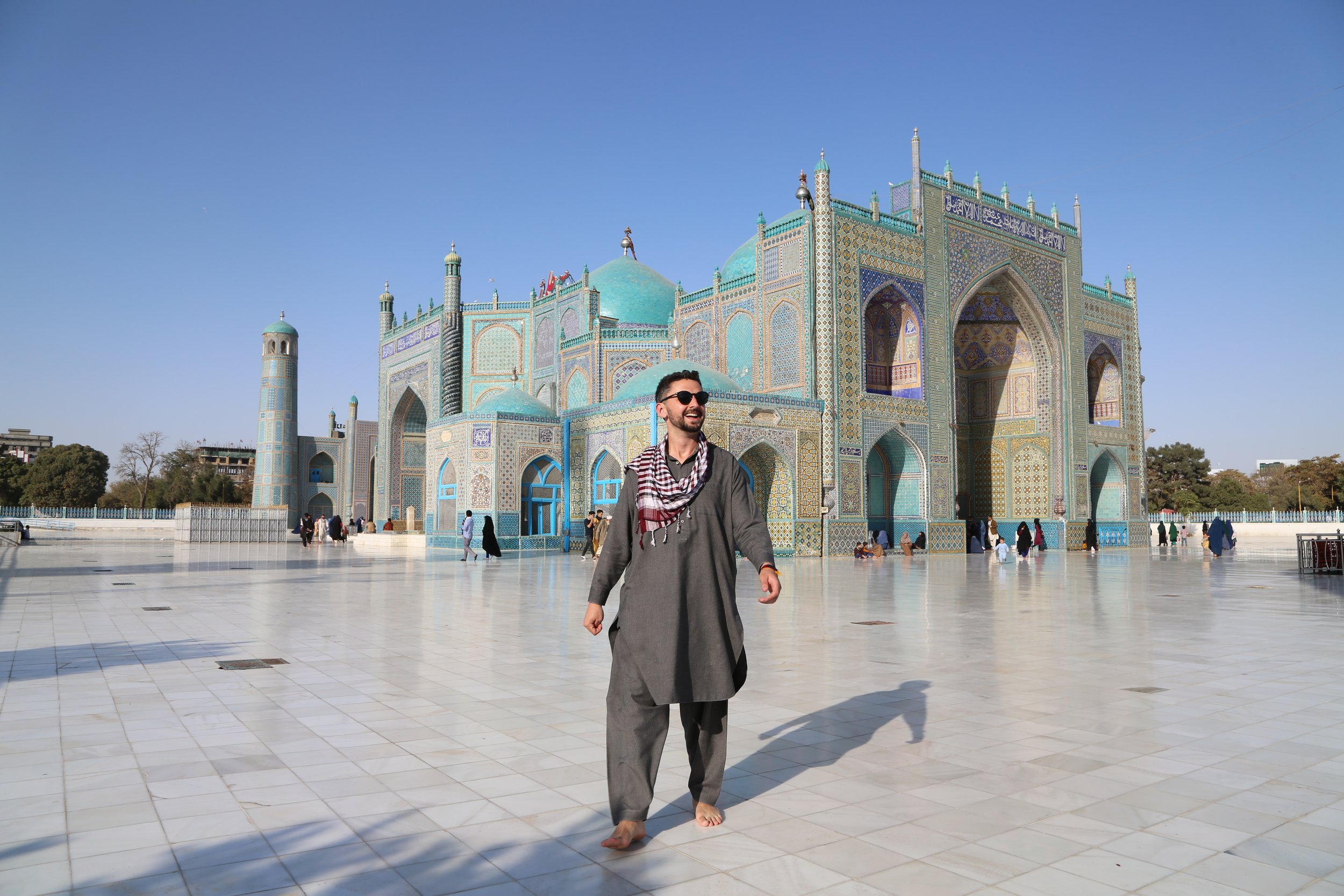

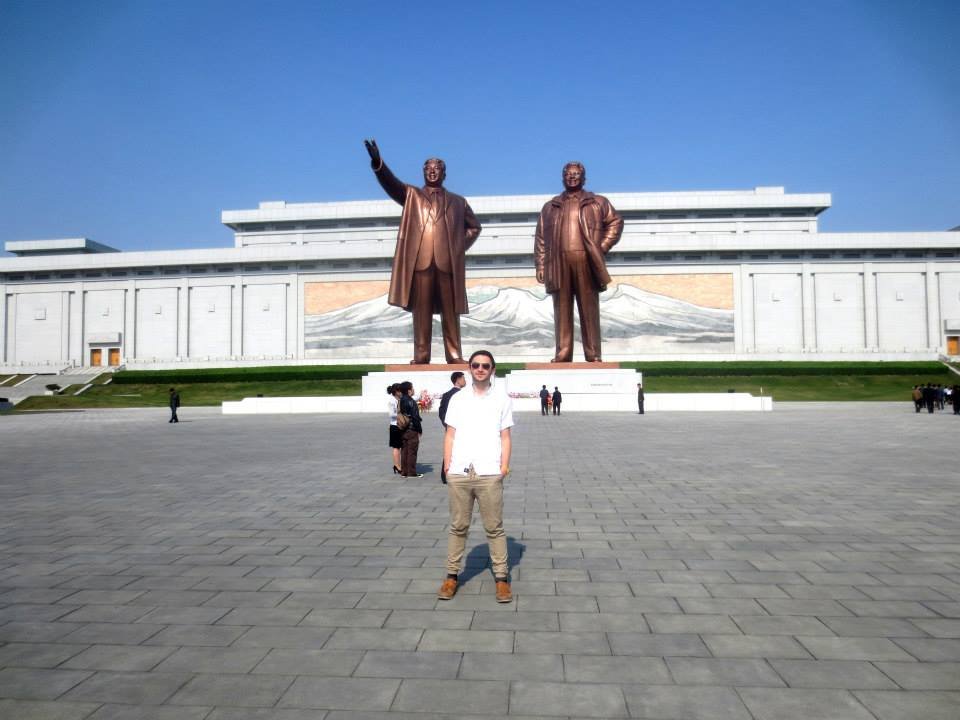
It’s a responsibility the 30-year-old global citizen is quite philosophical about, whether in terms of what it means for the diaspora as a whole or who he is as a modern Jewish traveler.
“No matter how far you travel,” Herszberg said, “you always return to where you began — home.”
Experiencing the world’s religious diversity firsthand
Herszberg said he grew up in “a typical, Jewish suburban” home in Melbourne, Australia. But at the age of two, his South African-born mother took him to visit his great-grandmother in Canada.
That was his first trip abroad, and it was not too long after that Herszberg became fascinated with the idea of travel. He told The Sydney Morning Herald that ever since he was a little kid with the flags of the world hanging in his bedroom, he was hooked on the idea of visiting other countries.
As a student at Yeshiva College in the Melbourne suburb of St. Kilda and a law and arts student at the city’s Monash University, Herszberg used every opportunity he could to go abroad. Money made on holiday jobs funded his early travels, and education grants gave him the opportunity to study overseas in China and the United Kingdom. He later worked as a lawyer in Hong Kong.
Then, in 2019, Herszberg quit his job and started to travel full time, hoping to become the youngest Australian to visit all the world’s countries. COVID-19 lockdowns and travel restrictions put a wrench in his plans, however, and he was only able to get going again after lockdowns were lifted.
Though the records may not be his, Herszberg said seeing the world from another perspective and stepping out of his comfort zone far outshines any accolades or titles. The opportunity to grow in his experience and knowledge of other religions was a specific blessing of the trip, he said. “I’d never even been inside a church until some of my travels in my early 20s,” Herszberg said, “and there was so much I didn’t know or understand. I felt uncomfortable, not knowing where to sit, if I could sit, so I just stood and walked around.”
That discomfort, Herszberg said, was not out of animosity but curiosity. As he began to travel more, he sought out opportunities to visit more churches and other holy sites — temples, mosques and monasteries. “So much of this trip was about pushing myself beyond various frontiers,” he said, “and transcending the barriers that we put up in ourselves because of our religious, cultural or ethnic backgrounds.”
The more Herszberg traveled, that initial fascination turned into a certain familiarity. Whereas early on he noticed more of the differences between Christianity, Islam or Buddhism and the Jewish faith with which he was familiar, Herszberg slowly began to appreciate the similarities they shared. As time progressed and he was invited into peoples’ places of prayer or witnessed a ritual or ceremony, Herszberg began to see how each religion channeled something of shared human desires, fears, or longing for community.
“There’s a moment when you’re in a particular place or taking part in an experience when you can feel there’s something the air — a higher element that the people around you are seeking after, together,” he said.
Exploring the end(s) of the Jewish diaspora
While Herszberg does not consider himself religious, the concept of communitas — or shared intimacy — resonated with him as he connected with Jewish people and stories around the world. Whether he was visiting a synagogue in Damascus, Syria; a “mikveh” — ritual bath — in Cairo, Egypt; or a Jewish school in Buenos Aires, Argentina, Herszberg always had a sense that these were his people.
“I didn’t exactly have a sense of spirituality as I went to these places, but there was always an element of collective belonging,” he said.
In fact, Herszberg said he almost experienced the “end of the diaspora” in a way. “The Jewish people have always been scattered and been defined by dispersion,” he said, “but the more I traveled and the more people and stories I got to know, the more I saw how these scattered communities are connected. That they know each other — both literary and in a sense of shared identity.”
In the end, Herszberg said he found the worldwide Jewish community to be pretty small. “Every country I visited — if I was there on a Friday — someone would invite me to a Shabbat dinner,” he said. Then, in the course of the evening’s conversation, Herszberg said he would find someone both parties knew.
These moments made Herszberg feel at home, no matter where he was traveling. Herszberg said that whether he was in Uzbekistan or Ghana, the smells were the same, the conversations sounded similar, and the whole experiences felt familiar. “Literally,” he said, “these Shabbat dinners felt like home.”
Herszberg tells one story from Tehran, where a seemingly random man came up to him and invited him to his house for dinner. As Herszberg sat down, the conversation soon turned into a roundtable on the various relations they held in common. “I sat there and was like, ‘How is this happening in Iran?’” Herszberg said. “Those kinds of experiences make the worldwide diaspora feel like a very real and personal community.”
Herszberg’s journey, however, was not only one of new connections and relationships gained. It was also one of confronting loss and coming to terms with the present absences of Jewish communities destroyed or driven out in the past.
Whether confronted with piles of human ash at concentration camps in Central Europe or walking through neighborhoods that used to be defined by everyday Jewish life, Herszberg wrestled with the tensions between loss and legacy, stories lived and silenced.
In certain places, he felt the weight of tragedies like the Holocaust or the large-scale displacement of Jews from the Middle East and North Africa from the 1940s to the 1970s. Herszberg said he felt a sense of haunting familiarity as he walked through suburbs in Warsaw, Poland, or Prague, Czech Republic, and places like Aleppo, Syria, or Baghdad, Iraq. In each neighbourhood, Herszberg could almost hear the heaviness of the past crying out, the forgotten sounds of synagogues and schools, kosher shops and Jewish cemeteries still reverberating in the walls around him.
Daniel Herszberg in Iraq.
At the same time, as he visited these sites of lost Jewish heritage — sometimes being the first Jew to return after some 50 years — Herszberg said he also encountered stories of co-existence and tolerance. In particular, he spoke endearingly of an Arab caretaker he met at an old synagogue in Cairo, Egypt. Living in the old mikveh, his father and grandfather had been the synagogue’s custodians. “As soon as he knew I was Jewish, he started singing all the Jewish songs back to me,” Herszberg said, “and then he reenacted blowing the “shofar ”— a ram’s horn used as a musical instrument in Jewish religious rituals.”
For the rest of the day, the custodian took Herszberg through the old neighborhood, pointing at apartments and naming people who used to live there, what they used to do together, and what it used to feel like. “It brought the whole place back to life,” said Herszberg, “and told a different story than the one we might have been used to hearing.”
These moments led Herszberg into what he called a continuous renegotiation with the very meaning of the cliché saying about “finding one’s place in the world.” The things he learned, and the memories he carries with him still, were not just intellectual or adventurous, but emotional. “I experienced it as respect,” he said.
‘In a sense, all Jews are fellow travelers’
Over time, Jewish travellers have set out to explore the world and share their story with others. Elisa Uusimäki of Aarhus University in Denmark said the very idea of movement and travel is central to Judaism’s broader social memory. In a special issue of the Association for Jewish Studies’ magazine, Uusimäki wrote that narratives about the patriarchs and their families moving from Mesopotamia to Canaan to Egypt, the Exodus, or the Babylonian exile are central to global Jewish identities.
They also illuminate and challenge contemporary notions of what it means to travel. Anthropologist and author Ruth Behar — who was born in Havana, Cuba to a mixed Ashkenazi-Sephardic family — wrote in her book “Traveling Heavy: A Memoir in between Journeys,” that while travelers go elsewhere out of free will, they need to be distinguished from immigrants, refugees and exiles.
Unfortunately, most Jewish journeys fall into the latter categories, Behar wrote, but some travel tales have been told by Jewish authors over the years. One particularly famous traveler who recorded his experiences was Benjamin of Tudela, who traveled through western Asia almost a century before Marco Polo completed the same trip on his way to becoming a household name.
Another was Israel Joseph Benjamin — known by his pen name Benjamin II in deference to the Benjamin above. Benjamin had always wanted to go in search of Israel’s so-called “lost tribes.” And so, in 1844, he set out from his home town in Fălticeni, in modern-day Romania, traveling through Egypt, Palestine, Syria, Kurdistan, Mesopotamia, India, Afghanistan, Persia, Singapore and Canton. Upon his return in 1851, he recorded impressions of his travel in Hebrew.
Then there is Glückel of Hameln, a Jewish woman from Hamburg, Germany who lived between 1646 and 1724. Traveling for business, Glückel recorded her encounters with pirates and bandits in Yiddish for family and friends to read. These were eventually published for the public in 1896.
Scholar Elka Weber notes that these Jewish travel writers used their memoirs as an extended form of self-definition. Traveling from the familiar environs of home to lands foreign and far away offered the opportunity for them to consider themselves in relation to the places and people they encountered — much like Herszberg.
The immersive nature of these travelers’ encounters with the language, food, prayer and celebrations of others — whether Jewish or not — created paradoxical feelings. By taking those who sojourned abroad out of our comfort zone and into unknown land that can also feel so curiously familiar, travel blends the learned and the personal, the everyday and the transcendent, becoming a spiritual endeavor itself.
The best journey brings you home
Today, opportunities abound for Jewish travelers looking to connect with this long history or follow Herszberg’s lead in counting as many countries as they can: There are “shtetl routes” that offer heritage interpretation trips in the footsteps of Jewish culture in smaller Central and Eastern European towns; tours to the Occupied Territories that offer the opportunity to see the situation from the Palestinian point of view; and places like the Chateau Blanc Kosher Hotel in Cuba, which caters to Jewish travelers’ needs on the Caribbean island.
Aaron Wexler, 37, who hails from Los Angeles, California, said that he had always enjoyed travel, but it was not until last summer that he connected his journeys with his Jewishness.
“It happened as I was walking through the gates at the Buchenwald concentration camp in central Germany,” Wexler said. “I suddenly realized that this place was part of me, my story, my history.” Wexler went on to visit other places of Jewish heritage in the area, including the Jewish quarter in the old-city of Erfurt and a synagogue and mikvah in a countryside town where Jews no longer reside.
Wexler’s great-grandparents left Germany in the 1920s, and the idea of the Holocaust always felt like an educational experience or collective memorial to him, rather than something personal. Traveling to Germany changed that, Wexler said. “I ended up learning things I had not known, not known that I’d known, or known in my head, but not in my heart,” he said.
While he is not trying to visit every country on earth, he said Herszberg’s journey — and his own experiences in Germany — have already inspired additional trips. On a winter trip with family to the island of Curaçao, Wexler went to Mikvé Israel-Emanuel in Willemstad. Consecrated in 1732, it’s the oldest synagogue in continuous use in the Americas. This summer, Wexler plans on taking his kids to Morocco to learn about the Jewish community there.
Like Herszberg, Wexler said the further and farther he goes, he always feels a sense of returning home.
“Everywhere I go, I am learning something more about the world, but also more about myself,” he said. “It’s a bit cliché, but I’ve heard it said ‘the best journeys bring you home,’ and I’m finding that the more I travel, the more at home I feel in the world.”
Ken Chitwood is a religion nerd, writer and scholar of global Islam and American religion based in Germany. He is currently doing post-doc research at the Free University of Berlin at the Berlin Graduate School Muslim Cultures and Societies and is a journalist fellow in the University of Southern California’s Center for Religion and Civic Culture. Follow Ken on Twitter @kchitwood.


